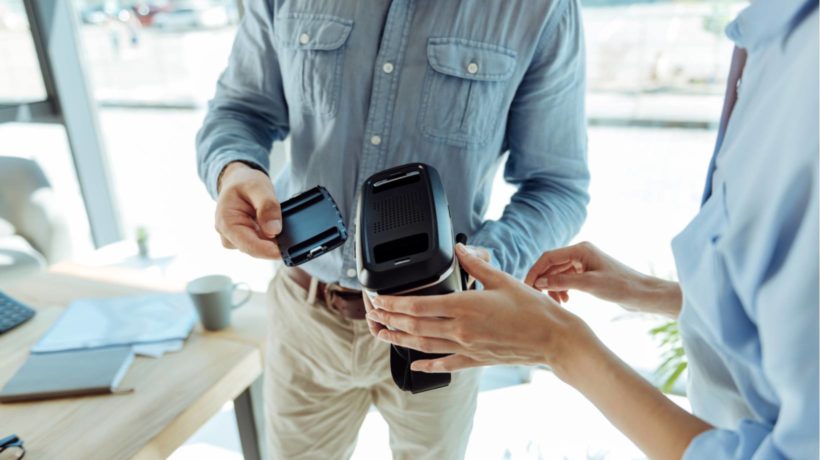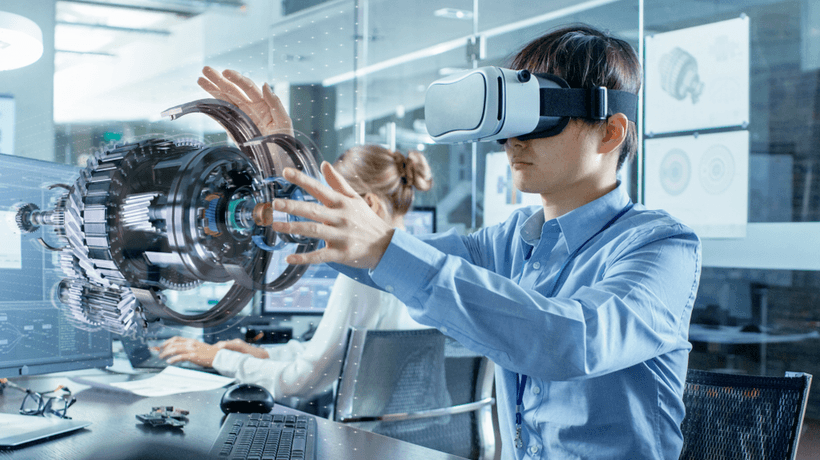Virtual Reality Training
Virtual Reality (VR) training refers to a method that imparts practical skills to the trainee utilizing Virtual or Mixed Reality (MR). It has been demonstrated that practicing produces results that are significantly more effective than those obtained by conventional instruction. Improving User Experience is essential in VR training.
The additional value of practical VR training, the User Experience, and the training effectiveness are all considerably improved by the addition of haptic feedback. This article explores the technology of VR haptic gloves and gives some real-world use cases for using them in VR training.
What Are VR Haptic Gloves?
Wearable haptic feedback gloves provide users with lifelike touch and contact experiences through sophisticated tactile feedback. Haptic sensors built into the gloves enable users to simulate a natural sense of touch when activated. Organizations have known for years that combining VR and haptic technology can improve the efficiency of their training. VR haptic gloves are an improvement over handheld controllers when used in VR training, because users can use their hands as they'd do in everyday life.
Use Cases Of VR Haptic Gloves
1. Digitized Maintenance And Security Training
Low-to-medium-voltage electrical gear that requires maintenance is frequently rented out by reputable electrical equipment suppliers. The workforce of the customer organization must attend periodic training to learn and review the processes necessary to carry out maintenance activities. This training is conducted at training facilities throughout the world. The workers must travel to the training facility and stay there for a few days to participate in training exercises on dummy equipment under the trainer's guidance. The maker of electrical equipment created a haptics training system to digitize staff maintenance and security training so that the training sessions could be delivered to customers. To enable their customers to retain the training situations and experience as documentation, the solution also sells a VR training system with haptics and VR equipment.
2. Training In An Immersive Flight Simulator
This VR exercise immerses students in a pilot training situation more thoroughly than a standard flight simulator. Learners sit in the pilot's seat in the cockpit after donning their haptic gloves and VR headset. In this simulated cockpit setting, students carry out the following tasks:
- Taking hold of and operating the plane's yoke
- Using the throttle to accelerate and decelerate the flight
- Engage the cockpit's various knobs, toggles, and buttons
3. Assembling A Satellite Receiver
The military has used haptic gloves in their Virtual Reality training for putting together satellite receivers. The goal is to avoid causing expensive training equipment damage. The trainees can install the virtual components of the satellite receiver in the same way they would the actual hardware, by donning haptic gloves in a virtual environment. Even though the study has been active for only four months, the initial findings are promising. It needs some adjustments, but there is a good probability that it will eventually become the norm for Dutch defense training.
4. Manufacturing Process Training
A work shadow or apprenticeship is often followed by hands-on learning that allows students to put their newfound abilities into practice. Haptic gloves boost this hands-on component of instruction by giving students a realistic warehouse setting in which to carry out challenging tasks. An employee in the manufacturing industry can practice performing the following procedures with the help of this interactive VR training activity:
- Print and apply box labels to practice
- Learn how to properly assemble the contents in the boxes
- Close their box completely and forward the delivery to the next step
5. Training To Administer Battlefield Emergency Trauma Care
The U.S. Defense Health Agency granted an agreement to certain companies in 2020 to create a haptics-based training system for enhancing the capabilities of U.S. army soldiers who provide immediate trauma care on the battlefield. True-contact haptics in haptic gloves were integrated with the army's Tactical Casualty Combat Care (TC3) environment thanks to funding provided by the contract. To increase the effectiveness and persistence of training, and thus the number of lives saved on the battlefield, this contract provided funding for research and development.
6. Telexistance
The first example comes from a Japanese company which developed a robot that faithfully mimics the movements of the person commanding it. They produced a realistic and immersive experience. The user could be somewhere else that they wouldn't typically be, if they were wearing the gloves and headphones. Additionally, the user has access to the robot's eyes. Because of SteamVR trackers, the robots' arms may be manipulated to increase the level of immersion. This was produced by utilizing the ManusVR C++ SDK and its force feedback modules.










